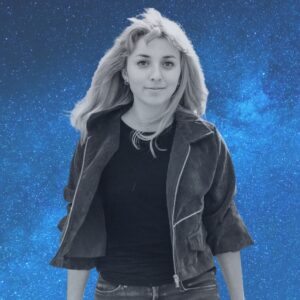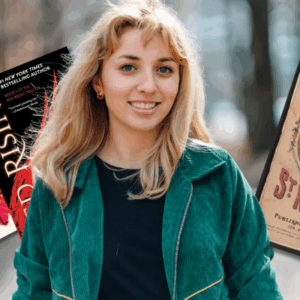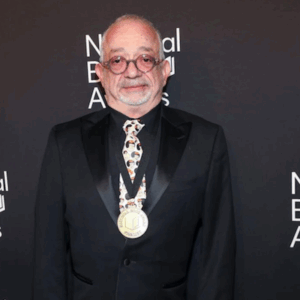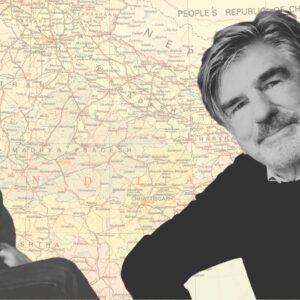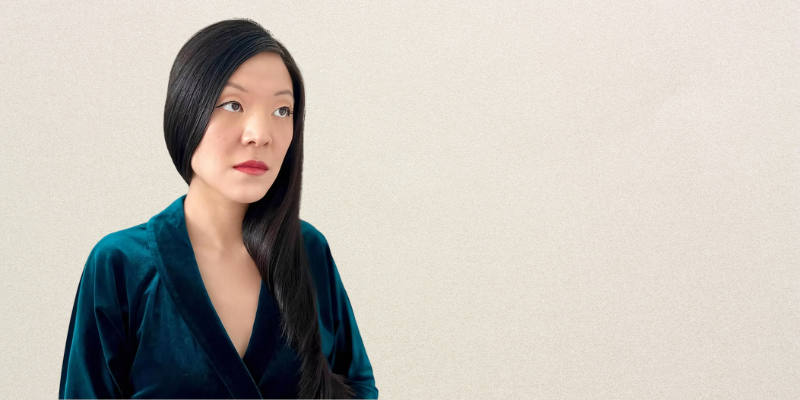
Elaine Hsieh Chou on Literary Community, Identity, and Playing With Form
Jane Ciabattari Talks to the Author of “Where Are You Really From”
Where Are You Really From, Elaine Hsieh Chou’s stylistically complex story collection, offers intriguing glimpses into the ways in which we have become captive to a habit of continually evaluating our own identities. With glints of sardonic humor and razor-sharp surrealistic details, she reveals the layers of self hiding behind performative masks adopted by a wide range of characters—from a young teen whose self-image is undermined by beauty standards she discovers while visiting grandparents in Taipei, to an emerging writer on his first residency at a writers’ colony who stumbles through the beginnings of an unlikely love affair as if he were the main character in a narrative he is writing. “Many of the stories speak to how our lives are shaped and misshaped by the gap between who we think we are and how others see us—the inadequacy of perception, even our own,” as Chou put it during our cross-continental email conversation.
*
Jane Ciabattari: Your title brings to mind a moment when I was sitting with a group of Southern Pomo/Coast Miwok tribal citizens at a meeting in Sonoma County and someone shouted, “Go back where you came from!” and one of the elders responded, “We’ve been here for thousands of years.” How did that sort of microaggression inspire your title?
Elaine Hsieh Chou: The title came from a satirical story, “A Model Minority,” that has since been cut from the collection. It follows the first Asian American man to join the KKK, though at first, he thinks he’s only joining his company’s softball team. After he becomes smitten with one of the few women on the team, they go on a perplexing date where he fails to realize she’s collecting intel on him to determine whether or not he’s a good “fit” for the team. When she asks him where he’s from, he responds Wyoming, to which she counters, “Where are you really from?”
The question stuck with me because it’s one I’ve often been asked before, especially when I lived in France (my answer was never satisfactory). Even after I cut this story and considered alternative titles, nothing else had the effect Where Are You Really From had on me.
JC: When did you begin writing the stories in this collection? When did you finish? How did you determine the order of the stories (and why did you leave out stories)?
EHC: I wrote the first story in the collection, “Carrot Legs,” in 2016. This was shortly after I quit my PhD in English literature and started writing fiction again, which I hadn’t done since I was an undergraduate student. The story has undergone a long history of evolution from when it was a flash fiction piece, to when it was included in my MFA application materials, to when it was published in Guernica. I wrote several of the stories in the collection, and many others that haven’t been included, during my MFA. By the time the program ended, I had completed a full collection (Where Are You Really? was the title of my NYU thesis).
Afterwards, I continued writing more stories, in addition to the novella. The last story I finished in the collection was “You Put A Rabbit on Me” in 2023, though I started the story back in 2021 (in that version, there is an Elaine A, B and C—each time one is introduced, the story splits off, first into two columns, then three. As you can imagine, this format became unmanageable!).
When it came to determining the order of the stories, I first tried not to stack similar stories one right after the other. For example, I tried to separate the first-person stories from each other, likewise for the third-person stories. I also considered the reader’s mood and avoided grouping stories with a similar tone or atmosphere together. Lastly, I considered what might act as a “palate cleanser.” For example, where to place “Happy Endings” was especially tricky for this reason because of its graphic and violent nature.
From when the story was first sold in 2020 to when it was ready for publication, I ended up cutting around five stories and all of the flash fiction pieces. In that time period, I finished “You Put A Rabbit on Me” and wrote “Featured Background” and the novella, “Casualties of Art.” Many of the stories also expanded in length after revision, even when I had made significant cuts. When deciding which stories to keep, the ones that persisted through every revision were more interior, more psychological, more intimate. I realized the collection as a whole had grown a lot darker since its inception.
JC: “Carrot Legs,” the coming-of-age story that opens this collection, begins with the line, “In America I was not beautiful, but in Taiwan I was ugly.” Your thirteen-year-old narrator is in Taipei to visit her grandparents for the first time over the summer. Spending time with them and her sixteen-year-old cousin LaLa, she encounters family secrets as well as an awareness of body-shaming beauty standards she will never meet. What was the impulse for this story?
EHC: When I lived in Taipei the year after I graduated from college, I heard the term “carrot legs” for the first time and eventually, I began to notice “carrot legs” too. There was an unabashed openness about altering one’s appearance, not just in advertisements and commercials but in casual conversation, too. In Mandarin, the word for “dark” is the same word for “black”; I was always shocked when people would casually make critical remarks like, “You’re so dark” for that reason. Living in Taipei for that year, I didn’t realize how much the city’s fixation on beauty had affected me until I left. My American friends had to point out how much paler I had become for me to realize I had started to subconsciously subscribe to Taiwanese beauty standards.
JC: “Mail Order Love” begins on a surreal note, as Bunny, the mail-order bride express shipped from Taipei, arrives at older widower Frank’s door in a massive cardboard box. (The underlying concept is based on Congress banning immigration into the U.S.) How did this story evolve? And how were you able to bring it to end with such a surprising moment of tenderness?
That’s the thing I think immigrants and the children of immigrants are continually haunted by: alternate or multiple realities.
EHC: The story started out as a simple concept: What would happen if we literalized mail order brides? The image of one arriving in a cardboard box tickled me. I didn’t let myself outline or plan this story; I decided to just write into it and see where it took me. I realized I wasn’t interested in the most obvious iteration of this story: creepy older man buys a younger wife and is abusive towards her. That iteration just felt too expected, too pre-determined to contain many surprises. But what did make sense to me was that in a relationship featuring such a large age gap between a man and a woman, the dynamic would inevitably turn into a father-daughter dynamic. And that is exactly what happens between Frank and Bunny.
Even after that initial version of the story was completed (and workshopped in Nathan Englander’s workshop!), it continued to evolve: honing in on both Frank and Bunny’s unresolved grief. Pushing the story to really reckon with what it means to be purchased and potentially returned. The tension between China and Taiwan as the backdrop to Bunny’s arrival was also a new addition; I didn’t realize until later that in some ways it mirrors the uneven power dynamic between a buyer and a product.
The ending has always stayed the same: I remember I didn’t know how Susan died until I came to that moment at the end. It was one of those rare moments where it felt like the story was working through me, the characters were speaking for themselves and I had to cede control just enough to hear what they were saying. So when Frank said, “She killed herself” in the first version of the story, I myself felt shocked! Immediately followed by, oh but of course. Look at how this man who is desperate to love, and be loved again, has behaved the entire story. The love of his life could not have died any other way.
JC: The surreal elements in “The Dollhouse” allow a self-effacing mother who now works as a waitress to tell a complicated and revealing personal story to her young daughter by using dolls as fill-ins for the expectant mothers she once served while working in a place she calls “Dreamland.” Did you based Dreamland on the maternity homes central to “birth tourism?”
EHC: Yes, I did! I was fascinated by maternity hotels when I first learned about them, specifically the ones in the San Gabriel Valley in the 1990s, when a major bust happened in that area. I fixated on what it would be like for all these pregnant women to be paying to secretly stay in the same crowded house, to give birth alone in a foreign hospital, all because they believed in the power of American citizenship.
Another part of my fascination is somewhat personal: my cousin is one such “anchor baby.” My aunt came to the U.S. when she was eight months pregnant and had him here, though she stayed with my parents, not at a maternity hotel. What is the real kicker is that my cousin used his American citizenship once when he was in high school and disliked the experience so much that he never came back. When you think about it, it’s not surprising… Would a bunch of kids in Orange County be kind to a new arrival from Taiwan in the early 00s?
What’s also interesting is that every single one of my Taiwanese American friends has obtained or is working towards obtaining their Taiwanese citizenship because we have seen through the myth of the American dream that our parents bought into. Taiwan is no longer a place to leave behind; it’s a place to aspire to live in. The quality of life in Taiwan is indisputably higher than in the US. Parents who left behind everything for the U.S., a country that has never been hospitable to immigrants, have to fully buy into the American dream myth or else the consequences of their decision to leave might be too painful to grapple with.
That’s the thing I think immigrants and the children of immigrants are continually haunted by: alternate or multiple realities. Most of us, certainly I have, faced these major cruxes where our lives would have fundamentally changed if a parent had stayed or chosen to move back, or in my case, which parent got custody of me after divorce.
JC: In “Featured Background,” you provide great detail about your narrator Gene’s day on a film set on which he and his friend Napoleon will play “featured background” characters. What sort of research was involved in developing this scene?
EHC: After my MFA program ended, I worked as a background actor in NYC for a year. It was initially a way to make ends meet as I was having trouble landing a stable job, but it ended up being a transformative experience. For someone who loves storytelling—fictions that are meant to pass as truth (or at least, emotionally truthful)—a film or TV set is a hypnotic, addictive place to be. I got to see up-close the enormous amount of work required to make something fake pass as real. Not just from a set design or directorial POV, but from an actor’s POV as well—in the many takes they often did, what made one more believable over the other?
The set that most inspired “Featured Background” was a set in which over seventy AAPI background actors were gathered together. I can’t go into much detail because I did in fact sign an NDA, but what was most fascinating about this experience was that we all hailed from different ethnicities and backgrounds (including one young, fervent Trump supporter). But on screen, we portrayed a single, united ethnicity. When the series aired, the audience would not know we were Asian Americans in Long Island—they would think we were locals in an East Asian country.
JC: The film-in-progress is to be directed by Gene’s daughter, Anna Wu. He describes their estrangement: “What a funny word, estrange! Gene thought it sounded unnecessarily fancy, almost French, since it called to mind escargots. But smuggled into the belly of the word was strange, and yes, strange was the word for a part of yourself going off into the world, scaling magnificent heights, while the other part remained a distant spectator…” You capture a lifetime of family tragedy in a matter of pages. How did you find a way to wrap up this film shoot and that father-daughter interaction by the end of the story?
EHC: I knew that whatever Gene tries to offer Athena, it would have to be tragic. He knows he cannot turn back the clock and be the father to her that she needed when she was a child. So when he volunteers to be debased for her film, a controversial film concept none of the AAPI background actors buy into, this is the least he can offer her. Although he is grappling with some cognitive dissonance, he knows the pain he has caused her is irreparable. Only something that is equally enormous, in terms of humiliation, could suffice.
JC: “Casualties of Art,” the novella at the end of this collection, is savvy in its depiction of a writers’ residency, with all the anxieties, hierarchies, revelations and betrayals. Your narrator enters his studio for the first time and tells himself, “…I’ve made it. I applied, I got in and now I’m here. These are the facts. And yet self-doubt still plucks at me.” After the first awkward dinner (he’s late and has to bring a plate of food from the kitchen as the introductions are going on), he has another insight: “…I look at the other fellows and new knowledge spills over me, as cold and unmistakable as the ice in my glass. I must be here for diversity purposes.”
It can feel like there is no open space to play in, like you’re boxed in (and judged) one way or another.
Then he meets/is smitten by Sophia, a painter whose work is “concerned with demystifying the mythologies of the East Asia body invented by Westernism,” who is at the residency with her white husband Carter. And Lauren, who initially praises his new short story for its trauma narrative. I’m curious about the multiple seeds for this story. How has your own experience been at residencies? And with “diversity” situations in the literary world? How did you come up with the concept for the ending—or as I think of it, your conclusion(s)?
EHC: I had no experience of attending a writing residency when I wrote the novella in 2021 (and the one I did attend three years later, Hedgebrook, was nothing like the one David attends. Hedgebrook is something out of a fairytale and yes, the famous cookie jar is every bit as magical as it sounds).
In the original version of the novella, the writing program is half MFA workshop-style, half writing residency; so, three different faculty members rotate teaching workshop across the three months. I’ve had much more experience with workshops (both being in them and teaching them) than residencies. But eventually, I cut out all the workshop scenes after realizing they were not essential to the novella, which at bottom is a kind of doomed love story and an exploration of the ways art, ambition and creative insecurity can corrupt our selves and our closest relationships.
In terms of diversity in the literary world, my experience really comes down to long discussions I’ve had with fellow writers of color. We talk about what sort of books are being published, what sort of themes or subjects seem to be reinforced or upheld by publishing (and by contrast, which ones aren’t). We talk about the fear that if you don’t write about your community, you’ll be accused of being self-hating and of committing erasure in your community, but on the flip side, if you continually mine your community’s history for its pain and its stories, you’re seen as capitalizing on it, as peddling “trauma porn” that sells well (which also invites the question of, is this kind of story healing or educational and if the latter, who is it educating? Who are we writing for?). It’s just excruciating all around. It can feel like there is no open space to play in, like you’re boxed in (and judged) one way or another.
As for the ending(s), they came about because I was not satisfied by any singular ending. The only ending that felt right, and truthful, were the multiple endings. It all coalesced when I thought about how throughout the novella, David is continually trying to interpret his life, and the people around him, as if he is the main character in a story. He doesn’t know how to experience life moment-to-moment without forming it into a narrative (in that sense, he is a true Romantic with a capital R—as one of my former English professors vehemently argued, we never left Romanticism). But because of this, he is continually shifting around the narrative to see how it better supports his own POV and trying to cast people as the villains in his story who are responsible for his misery because it certainly can’t be him!
In the ARC version of the novella, David reveals he was once fixated on the scientific phenomenon of parallax. Although I ended up cutting this paragraph, parallax remains a defining conceit for the novella and the collection as a whole: the ways in which the truth bends and fractures depending on where you stand and where others stand. But this constant evaluation and re-evaluation of lived life ultimately freezes David; it renders him immobile. In real life, you cannot move around a few paragraphs and re-cast a rom-com as a horror novel. He has to commit to reality (and the static pain of consequences and accountability) to live a full life.
As a side note, our society has become very experience-commodified. Everything that is lived must be commodified in some way: as a novel, an essay, a Tweet, an Instagram reel. At some point, it’s hard to know if the process has reversed in on itself—if we seek out certain experiences solely to commodify them.
JC: You’ve written a novel (Disorientation, 2022), short stories, essays, screenplays. How do you know which form works best for the subject you have in mind? Do you have favorite forms?
EHC: Screenwriting had never crossed my mind until one night in 2018 when a kind of horror story came to me only in images. Previously, whenever I had a story idea, it would have a very specific voice or it would stem from a specific sentence. It was all voice-driven, in other words. But this idea was just a series of images, a mood; I couldn’t write my way into it. And I realized, oh this is a film. I better learn screenwriting!
Nowadays, it’s more or the less the same: when an idea comes to me, if it is not voice-driven or voice-y, but visual, I know it’s going to be a screenplay of some sort. Sometimes it’s a toss-up; I can see it going either direction and I have to make a choice keeping in mind the specifics of that story and how best to tell it.
I don’t think I have a favorite form—I’m always trying to find the right vessel for a story, even when I’m just figuring out: is this present or past tense? First person or third or even second? How does the narrator speak? For example, when I wrote Disorientation, I didn’t set out to write a satire—it wasn’t a genre I had experience in but I had to find the right vessel to contain an outrageous yet true story and satire was it. Like with all of these stories, and any new story, it was an experiment. Trying to find the perfect vessel for a story can feel as elusive as trying to sing a note you’re not sure exists. I never know if I’ve found it until I hit that note.
JC: How have you developed a sense of literary community over the years?
EHC: The majority of my literary community has been built through structured programs. For example, NYU’s MFA program, the Tin House Summer Workshop and the Sundance Episodic Lab. In those spaces, I met friends I remain close with to this day (and whom I’m lucky to have as early readers). I was also a co-host for a reading series, The Sweet & Sour Reading Series, in NYC that brought together established and emerging writers in fiction, non-fiction and poetry.
And on the flip side, participating as a reader for reading series and as a speaker on panels has been another wonderful way I’ve connected with fellow writers, in addition to connecting with conversation partners I’ve had and writers I’ve been conversation partners for. I’m especially grateful for the friends I met when we were all fledging writers—going through the ups and downs of submission, rejection and publication is a long path to travel on alone. Seeing my friends break out and be recognized for their talent and hard work is incredibly gratifying.
JC: What are you working on now/next?
EHC: A few things, but the project I’m most excited about at the moment is a semi-autobiographical coming-of-age project.
Jane Ciabattari
Jane Ciabattari, author of the short story collection Stealing the Fire, is a former National Book Critics Circle president (and current NBCC vice president/events), and a member of the Writers Grotto. Her reviews, interviews and cultural criticism have appeared in NPR, BBC Culture, the New York Times Book Review, the Guardian, Bookforum, Paris Review, the Washington Post, Boston Globe, and the Los Angeles Times, among other publications.









